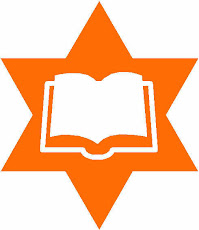Because each of us brings his/her unique perspective to the table, the insights and discussion are often wide-ranging and frequently provide “food for thought” during the coming week. The internet facilitates our study by allowing us to “hear” the ideas of people from around the world. This past week’s Torah portion was Toldot – the story of Isaac, Rebekah, Jacob and Esau.
Our leader this week was a knowledgeable colleague who works with young children and their families. She particularly likes the stories in Beresheit/Genesis because they’re great stories—filled with insights into family dynamics and interpersonal relationships. The discussion she led yesterday focused on the relationship between Isaac and Rebekah – their playfulness with and attraction to each other early on in their story and the silence between them as their sons grow into adulthood.
As she was guiding the discussion, asking questions and sharing her own, she read the following from Rabbi Yaakov Asher Sinclair from Ohr Sameach, a yeshiva in Israel where her son is studying.
In this weeks Torah portion, Eisav returns home so ravenous after his work that he sells his birthright for a bowl of lentils. In fact, he is so consumed by his desire for food that he doesn’t even describe the lentils by name. He merely says to Yaakov "Pour into me, now, some of that red red" (25:30) English translators usually append a noun to the adjectives, such as "that red stuff," but in Hebrew there is no noun, there are just two adjectives one following the other. In Hebrew, a noun is called shem etzem, meaning "the name of the essence", the thing itself. An adjective is a shem toar, "a name of description." When our physical desires lead us to mistake appearance for essence, when we exchange a world of nouns for a world of adjectives, when style dominates meaning, then we have truly lost our birthright.
“Stop,” I interjected. “Can you read that again more slowly?” She agreed. Here’s the part that jumped out at me:
In Hebrew, a noun is called shem etzem, meaning "the name of the essence", the thing itself. An adjective is a shem toar, "a name of description." When our physical desires lead us to mistake appearance for essence, when we exchange a world of nouns for a world of adjectives, when style dominates meaning, then we have truly lost our birthright.
There's really nothing left to add, is there?
Shavuah tov/a good week.





2 comments:
What an amazing thought! So often in working with children in particular, the outside form, the frame or the descriptors take precedence over what is real and true - our insides/essence. Even more interesting is that Esau is often called Edom - meaning "red." A shem toar, a name of description that later becomes synonymous with the Romans and other challenges that Israel faces... Food for thought.
Keep up the blogging, I just discovered you! kol tuv, arlene
Thanks Arlene - I like your extension of this concept. It's a powerful reminder of where we need to place our focus, particularly when we work with children. Please come and "visit" again!
Post a Comment